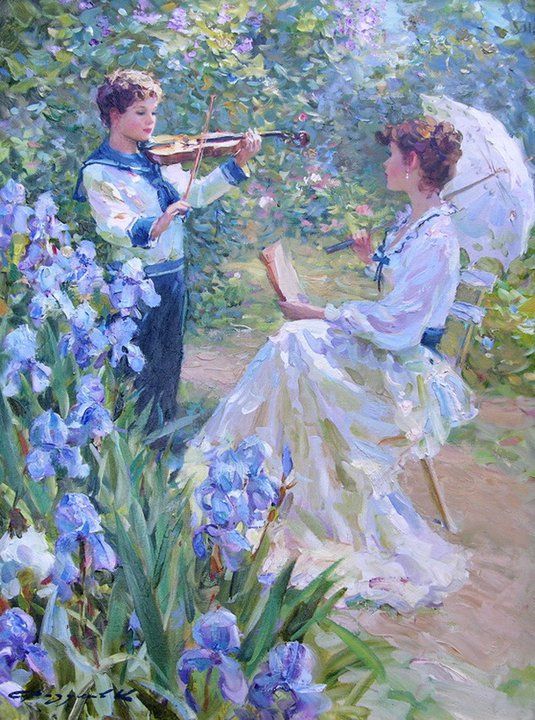Source: https://www.borrowlenses.com/blog/photography-tips/
Apr 28, 2016

Photography is a fun and fascinating process. It’s easier now than ever to get started too. Long gone are the days of needing portable darkrooms or waiting hours to take a single photograph. You can dive in and start snapping away at anything that piques your interest.
Since the technical barrier to photography has been drastically reduced, we have much more time to focus on how to take good pictures. We’ve compiled 47 photography tips for beginners that show quick ways to improve photography techniques without overcomplicating things.
There’s lots to take in as a new photographer, so we’ve also broken the list down into five categories. Jump to the sections you need the most help on below. With this in hand, browse our photography rentals to find gear that’ll help boost your skills.
Quick-fire Photography Tips
Learn all the rules so you can break them later
Photography rules are essential because they provide a foundation for more advanced photography tips and tricks later on. Learn the rules first, so you have more creative control when breaking them later.
Learn as you go — don’t let it prevent you from picking up a camera.

Expose and focus first, then frame your shot
An improperly exposed or blurry picture is unusable, but one not precisely framed may still be saved. For this reason, you should always focus on and properly expose for the subject before adjusting the frame.
This is something that happens more often when you have extreme lights and darks in the same scene.

Focus on the eyes
We are always drawn towards the eyes in a photograph, since eyes are a natural focal point that we connect with.
When taking portrait photographs at any aperture, make sure you nail the focus on the eyes. As long as the eyes are in focus, both you and your subject are more likely to consider the picture to be properly shot.

Make lots of mistakes, then learn from them
The more mistakes you make, the faster you’ll learn and improve your photography skills. All professional photographers once started without an understanding of anything on a camera.
The real value is in turning mistakes into lessons that build your skills. So try a technique or style you haven’t done before and expect to make many mistakes along the way.
Perfect the exposure trifecta
Getting proper exposure in photography consists of balancing three things: shutter speed, aperture, and ISO settings. You can start off by shooting in automatic or priority mode, but to get full control and shoot with manual camera controls you’ll have to understand the relationship between these three things that each directly affect the exposure and quality of your image.
ISO - Pronounced “eye-so,” this is (strangely) an acronym for International Organization for Standardization. The ISO indicates how sensitive the sensor or film is to light. For darker scenarios, you’ll need to use higher or more sensitive ISO settings to capture light, such as 800 or 1600 ISO. Higher settings generally introduce more grain or noise into the image.
Aperture - This refers to the size of the opening in the lens diaphragm. Smaller numbers mean a larger opening and more shallow depth of field in your images. Larger numbers let through less light, but make more of your image look sharp.
Shutter speed - This is the amount of time your camera’s shutter is open and the amount of time your sensor or film is exposed to light. Faster speeds can “stop” motion, while slower speeds let in more light and can capture blur and motion.

Always be ready
Be as prepared as a boy scout and always be ready to snap a shot. Most digital SLRs have nearly instantaneous startup times, and it takes almost no extra battery power to leave your camera on.
Keep your camera on one of the semi-auto or full automatic modes for unexpected pictures before your subject flies, drives, or runs away. You can always switch back to your preferred mode when you have time to adjust for a stationary subject. Sometimes you only have a split second to capture a great shot.
Use a wider aperture for portraits to make your subject pop
Aim for an aperture size around f/2.8 to f/5.6 to make the background behind your subject more blurred out. This will help remove distracting backgrounds and make your subject stand out. You can experiment with even wider apertures, but take care to keep your subject’s eyes in focus.
Prevent blurry pictures by
matching shutter speed
to the lens focal length
For example, if you’re using a 50mm lens you should use shutter speeds of 1/50 sec or faster to be able to capture handheld images and keep them sharp. Longer lenses are heavier and more difficult to keep steady — making the shutter speed faster helps avoid camera shake.

Straighten and crop when editing
You should try to straighten shots by looking through your camera’s viewfinder before capturing an image, but it’s not always easy to get this perfect on the first try.
The viewfinder or the preview on your LCD is quite small compared to full-screen editing so you may realize it needs adjusting once you see it on a bigger screen. Simply rotate your images in post production software and crop out the empty spaces.

Avoid camera shake
Camera shake can render a photo unusable. Increasing your ISO and opening up your aperture allows for quicker shutter speeds, reducing the chance of blurry images. However, this is not always an option if you’re trying to maintain other specific qualities of your image.
Start by doing what you can to reduce camera movement, which begins with learning how to properly hold a camera.
Use one hand to support the camera body and use the other to support the lens. Pull your elbows in against your body so they have something stable to rest on. Then hold your breath right before pressing the shutter release. You can further stabilize your body if there’s a wall, tree, other solid object, or even the floor to rest on. Some scenarios with longer exposures will require the use of a tripod.

Keep both eyes open when looking through the rangefinder
This has a few advantages. When shooting portraits, your subjects will be able to ‘connect’ with you by seeing one of your eyes. Without this, many subjects can feel a little bit uneasy like you’re hiding behind the camera.
Secondly, keeping both eyes open lets you monitor what’s out of the frame so you can predict when your subject will enter the frame. This is important for capturing sports, animals, or any kind of action shots.

Learn to use exposure compensation
Sometimes you’ll take photographs that don’t properly expose your subject—they are way too bright, or way too dark. This can be a combination of a few things: which areas of the scene your camera measured for exposure, and how different in brightness the light and dark areas are in your scene.
You can quickly fix these images by using the in-camera exposure compensation to make your subject look just right.
Photograph what you love
Focusing on what you love will make photography more enjoyable for you. If you are passionate about nature, people, pets, or something else entirely, start learning by taking pictures of it.
This will keep you interested in photography and allow you to overcome learning obstacles without breaking a sweat.
Make use of reflections
There are lots of unique opportunities if you pay attention where most people don’t. One of the things to look out for are reflections.
You can find them after (or even during) rainy days, in puddles, in lakes and even in swimming pools. Water isn’t the only source, try mirrors, big glass windows, and chromed out fixtures.

Tips for Common Types of Photos

Utilize the photography “golden hour”
Lighting is paramount since it dictates the shape, texture, contrast, and shadows in your images. The golden hour is about a one-hour window briefly after sunrise or before sunset.
The longer shadows and especially the more diffused light during these periods provide much more flattering light. Since the light is diffused, you’re much less likely to ‘blow out’ highlights or lose detail in the shadows that are difficult to avoid during the strong light available during most of the day.
This golden hour tool calculates the golden hour for you based on your location.
Get a low cost reflector to drastically increase your options
Having a reflector will let you better control light on your subject. You can even use foam core board at a craft store that’s black on one side and white on the other for less than five dollars.
Foldable fabric ones are also available at photography stores. The black side lets you block or reduce lights, while the white side can be used to fill in shadows. These two options give you much greater control with positioning and angles instead of being limited by the main light source. If there is too much contrast in your scene, use a reflector to fill the shadows on your subject. Adjust the reflector’s distance to your subject to control the intensity of the fill light.



How to photograph fireworks
Fireworks are an amazing sight—it’s definitely one that captures well on camera too. Be prepared and set up ahead of time to increase your chances for great results.
1.Predict where the fireworks will be so you can set up in a good spot. Most firework shows don’t last too long so if you have to move during the show you might miss it!
2. Keep the camera as still as possible. Use a tripod and a cable release so you can trigger the shutter without touching the camera.
3. Set your camera to ISO 100 for a clean looking shot. Fireworks are bright so you can also use a relatively small aperture around f/8 or smaller.
4. Press the shutter release right before the fireworks go off and release the shutter once the fireworks fade. Review your photograph, and adjust your framing and aperture if necessary for the next shot.
Portrait photography tips
If you’re just starting out, chances are you don’t have a studio or fancy lighting equipment.
Your best bet is to use window light. Turn off all the lights in the room and move near a window with some curtains so you can play around with diffusing the light.
Turning off all the lights includes the pop-up flash on your camera too. Make sure you focus on the eyes, make your subjects feel comfortable, and give it a shot!

Pet photography tips
Pets are full of personality, and capturing that on camera can require different techniques depending on the individual pet. Dogs especially tend to reflect your emotions, so act accordingly depending on the photo you want.
Some pets can be very active too, so a short telephoto lens can help if you’re backed up against a wall. Shoot in shutter priority mode and hover around 1/125 sec to 1/500 sec depending on the pet. Lastly, similar to human subjects keep focus on the eyes sharp.

Landscape photography tips
Landscape photos usually capture vast spaces. The most common you’ll see is landscape photos in nature, but this applies to cityscapes too.
These images can trigger powerful responses with the stories they tell or the scenes they portray. But first you want to make sure you’re ready with proper gear and technique.
1. Visualize the image you’re trying to achieve. This will determine where and when you need to be for those results.
2. Choose a proper lens. For cropped sensor cameras a telephoto lens around 10-200mm will cover a lot of what you need for landscapes. One with image stabilization helps too.
3. Set your aperture. Most folks like having everything in the scene sharp since it’s more appealing for this type of photography. Use an aperture around f/16 or f/22 to achieve this. You may need to adjust depending on your distance from the scene.

Party photography tips
You can have fun at parties and get great images without futzing with your camera all night. Most parties will be indoors or in darker settings. Choose a wide zoom lens, with the widest range being about 24mm for photos in rooms with limited space and for group pictures too.
Avoid using the built-in flash since it creates unflattering images. Opt for an external flash or a mounted one you can direct to bounce off ceilings or walls.

How to paint with light
Drawing or painting with light in photography is really fun and interactive, so it’s easy to get other people to join in on this too.
People are usually receptive to it because it’s very relatable to drawing. You can get pretty creative with this too, depending on how many people are drawing, and your source of light.
1. Find a dark room or wait until after the sun sets and turn off any nearby lights. You’ll need a light source such as a flashlight to draw with too.
2. Set your camera to the lowest ISO, usually 100 or 200. Then set your aperture around 2.8 or 3.5. You can put a timer on the shutter between 5-15 seconds, or use the “bulb” function and have someone else hold the shutter release button for as long as you want to draw.
3. Press the shutter release, then turn on your flashlight and start drawing! You can quickly move it around, or take it slow and draw with detail, just like you would on paper. Review your image and you can adjust the aperture or shutter speed as needed. After a few adjustments you should have it down, and ready to draw anything with the flashlight!

Photography Equipment Tips
Start off by purchasing a digital SLR with a “cropped” sensor
Entry level and prosumer level digital SLRs typically have a smaller sensor than “full frame” cameras. These allow the cameras to be smaller, lighter, and more affordable.
The tradeoff is usually quality and low light performance and it will affect focal length of lenses you choose for specific photographs. It is relatively difficult to tell the difference in quality, so when it comes to the price savings, a smaller sensor is a great choice for folks just starting out.

Use a prime lens for better creativity
A prime, or fixed lens does a few things to help your photos. Not having zoom will force you to get up and move around, increasing the likelihood that you’ll find a new or creative perspective.
Using a prime lens also makes you consider your framing more since you’ll be forced into situations where there will be obvious things you want to include or remove from the frame. Finally, fixed lenses are usually faster and aren’t confined to aperture limitations at various focal lengths.

Don’t try to clean the
inside of your camera
This includes not blowing inside the camera too. Unless you absolutely know what you’re doing, both the sensor and the mirror can be very difficult to clean and it’s more likely you will make it worse than fix whatever is wrong.
Leave it alone and take your camera to a local Borrowlenses for cleaning.

Push your gear to its limits before buying more
As a new photographer, you simply won’t need a lot of gear since you’ll have lots of learning to do before your skills surpass the capabilities of the kit lens.
It’s easy to get sucked into buying fancy new gadgets, but take time to push your current gear to the limit so you’ll be better informed of needs later, and prevent frivolous spending at the same time. You’ll discover that having gear restrictions can improve creativity in various areas too.

Memory cards: size matters
It may be tempting to choose one of the largest memory cards you can afford, but consider getting multiple smaller memory cards instead.
Although digital storage is relatively stable, there is still a chance your data could corrupt. If you have a very large memory card and plan to keep using it until you run out of space, your chances of losing all of your photographs are much higher than if you switched out with smaller cards in between sessions.
Don’t fall into the megapixel trap
More megapixels listed on a digital camera is not a clear sign of better quality, and manufacturers are beginning to drop out of this megapixel race to put the focus back on quality.
Do megapixels matter though? They matter up to a point if you’re looking to make large prints, banners, or posters, but investigate picture quality before buying, instead of relying heavily on the pixel count.
As an extreme example, it’s highly unlikely a 8-megapixel camera phone could produce results as good as a 8-megapixel digital SLR produced in the same year, simply because the phone’s camera will be limited in quality due to its size.
Get a filter to protect each
lens from scratches
Even if you keep your lens cap on during storage, it’s not practical to keep removing and replacing the cap during shoots. Putting a clear or UV camera lens filter on each lens you have is a great way to help avoid lens damage and is worth the investment compared to repairing or replacing scratched lenses.
Sometimes these filters can cause flares on your images though, so pay attention. You may have to remove the filter for some photographs.

Photography Composition Tips
Use the “Rule Of Thirds” for balanced photos
While framing a shot, visually break it down into a grid of nine equal rectangles and place your subject on one of the four intersections for a natural look.
The rule of thirds in photography is not a hard and fast rule, but a good guideline to follow instead of just placing your subject dead center by default.


Change up your perspective for better results
Most of us see everything from about five and a half feet from the ground, and if your photography is only done at eye level, things can look boring. Experiment with different angles to discover new perspectives.
Get on a chair or crouch down—anything to get above or below your subject to find an interesting perspective. If you practice this often, you’ll be more prepared to see the world and subjects in a new way and capture more interesting images.
Practice selective framing
for more impact
Determine what your subject is and be selective about what else is in the frame.
Whether you’re trying to capture a picture of a friend, a sunset, an action scene, an event, or a specific mood, place your emphasis on that and consider how you can add or remove what’s in the frame to best tell the story.
If you can’t physically move things out of the frame, you have plenty of other options: change your position or angle relative to the subject. Move in or out, or zoom in or out. Use a wider aperture to keep distracting elements out of focus. Try a panning shot that keeps a subject in motion in focus while everything else becomes blurry.

Rotate your camera
for vertical shots
It’s more natural to keep your camera in landscape orientation (when the image is wider than it is tall), so it can be easy to forget shooting in a portrait, or vertical position.
Try to mix things up by actively remembering to rotate your camera vertically for a different look. This keeps you in the mindset to be open to other possibilities. This can often result in improved photographs too!


Make use of leading lines
A photograph with weak composition will leave viewers confused about what they should be focusing on. Making use of leading lines in photography can help control where a viewer’s eyes move, especially with strong, obvious lines.
Lines that converge create depth and draw the viewer in while curved lines can take you around the frame and eventually land on the main subject.

Pay attention to depth of field
To add another dimension to your composition, be aware of depth of field. Depth of field in photography is the relation of how sharp the plane of focus is compared to everything away from that plane.
Depth of field is largely determined by the aperture size you set and your distance to the subject. Wider apertures emphasize depth of field, and so does getting closer to your subject.
Learn composition from the masters
Visit an art gallery, hop online, or find some art books and study composition from masters of the art world. Don’t forget masters of photography as well.
These artists typically work within a frame and through many years of expertise make decisions about composition. Study what they’ve done and try to pick up some pointers from what you like (or don’t like).

Give your subject some space
When composing, consider the direction your subject is moving in or facing and give it extra space over there. If you frame it so there’s nowhere left for your subject to move except out of the frame, it can create an unnatural feeling for the viewer.


Fill the frame
When you leave too much empty space or zoom out too much, it makes your subject a lot smaller relative to the entire picture. This deemphasizes the importance of your subject and can make it difficult for viewers to determine what your subject actually is.
Remedy this by moving in closer or zooming in.
Isolate the details
Occasionally you’ll encounter scenes that are just too big to fit inside the frame, no matter how far back you move, or what camera lens you’re using. Don’t settle for just taking a cropped version of a photo you want.
Look for unique details or features you can focus in on and push everything else out of the frame. This can uncover hidden gems in situations when you don’t have a great scene to begin with too.
Try the exact opposite of all these composition rules
For each of these rules, there’s going to be photographs out there that disregard them and still turn out beautiful.
Perhaps you want to create tension by putting your subject up against the edges. Maybe you want to shoot a whole series dead center and ignore the rule of thirds. Use the rules as a guide, but be sure to break them and experiment to discover something new.
Camera Settings & Features
Learn to use the histogram
Most people skip over this, but spending just 10 minutes to understand your camera’s histogram can make a big difference in your photos.
It will help you avoid unusable photos from overexposing bright whites and underexposing dark details in lower light situations.
Here are 7 examples of reading histograms from Clickin Moms.

Shoot in RAW + JPEG
Most digital SLR cameras give you the option to shoot in either RAW or JPEG, with some letting you do both. RAW files are much larger than JPEGs, but they are uncompressed images that let you correct things (up to a point) like exposure, white balance, and colors during post-processing with less of a quality loss than if you were to edit the JPEG instead.
Shoot in both RAW and JPEG, and if the shot you were going for is already good you can just delete the RAW version.
Use burst mode for
unpredictable subjects
Kids, pets, wildlife, and many other subjects can be unpredictable. Use burst mode on your camera to increase the chances that you’ll capture the moment you’re going for. Burst mode will let your camera continuously capture images as you hold down the shutter button.
This can also be helpful for things like group photos—you’ll be able to pick through a set of shots to find one with no one blinking!
In addition to burst mode, you want to make sure you have the right shutter speed to have the image look right without sacrificing exposure.
Remember shutter speeds for things you photograph the most:
A flying bird, 1/2000 sec
Kids playing sports, 1/500 sec
People walking, 1/250 sec
Pet portraits, 1/125 to 1/500 sec
To show motion blur of a carousel, ⅛ to 1/60 sec

Use the correct shooting mode for the best effect
Aperture priority - Usually labeled A or Av. Use this mode when you want control over depth of field, or how sharp your photos look at varying distances from the plane of focus.
Shutter priority - Usually labeled S or Tv. Use shutter priority when you want to prioritize capturing something in motion like for wildlife, kids sports, people, or vehicles.
Program mode - Similar to fully automatic mode, except you can adjust the aperture and shutter setting combination for desired effect and still achieve proper exposure. This is good for when you just want to make sure you get a properly exposed shot, with flexibility when needed.

Don’t use built-in flash as a primary light source
Using built-in flash as a primary light source can create very harsh shadows and an unflattering look.
It’s mainly useful as fill flash, such as when harsh sunlight is casting dark shadows across your entire subject. It’s also helpful in emergencies when there’s almost no light around and you just want to capture an image of something—even then it will create unflattering shadows and highlights on your subject.

Use as many automatic
modes as you can
Leave the white balance and ISO settings on automatic. If you’re a new photographer, having too many settings to worry about just for a single exposure can result in missing out on lots of photo opportunities. Automate what you can and work on your other skills.

Use the right White Balance setting
When lighting conditions change, our eyes adapt automatically. Digital camera sensors cannot do the same thing so we have to adjust white balance settings to keep images from looking too blue or too yellow.
Color temperature is measured on the Kelvin scale. You can leave this camera setting to automatic for most conditions, but occasionally you’ll need to set the white balance manually when your camera can’t figure out complex lighting situations.









































No comments:
Post a Comment